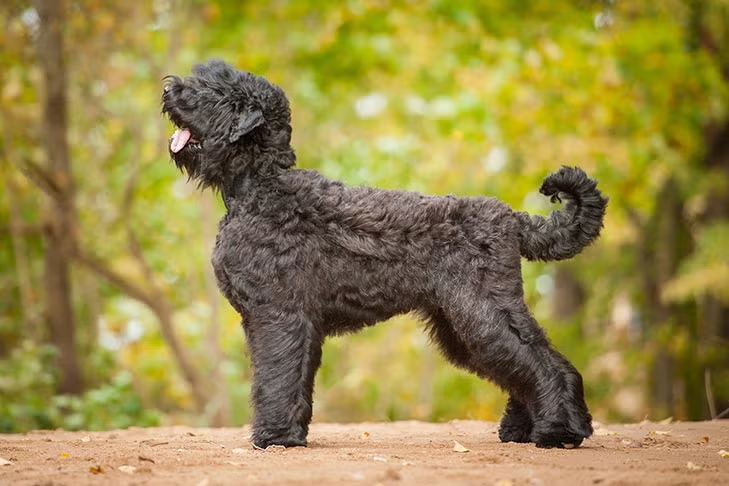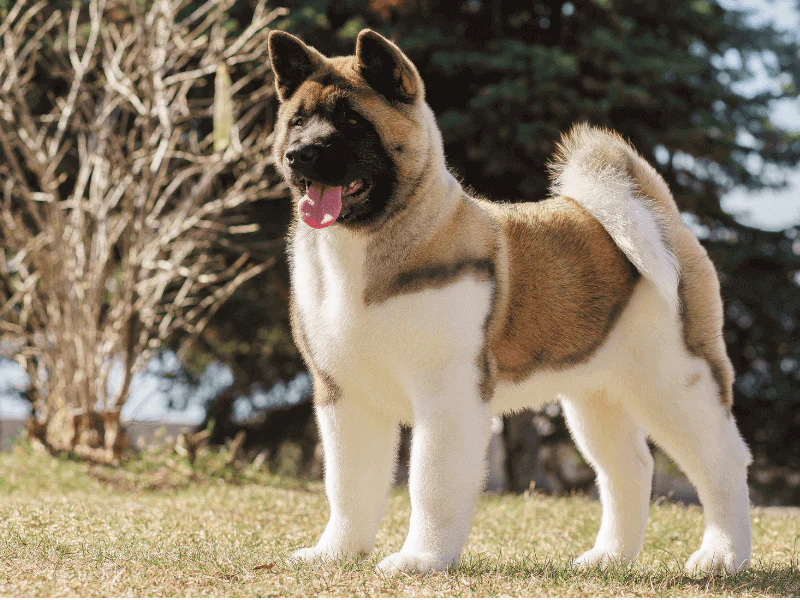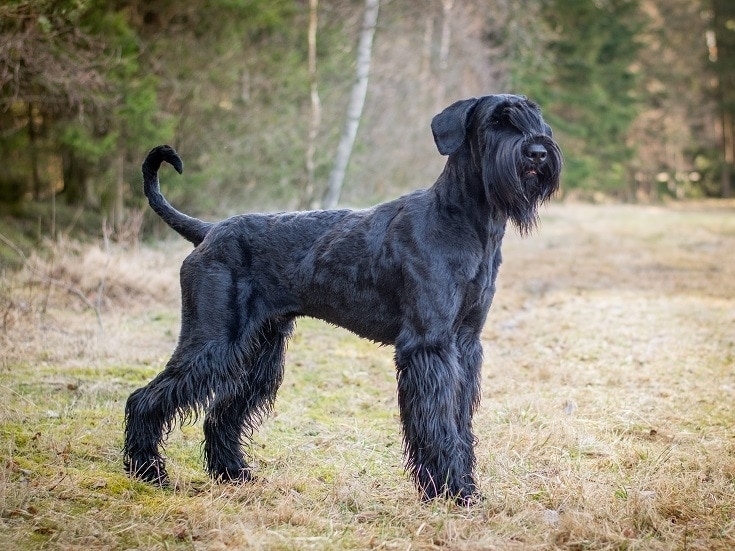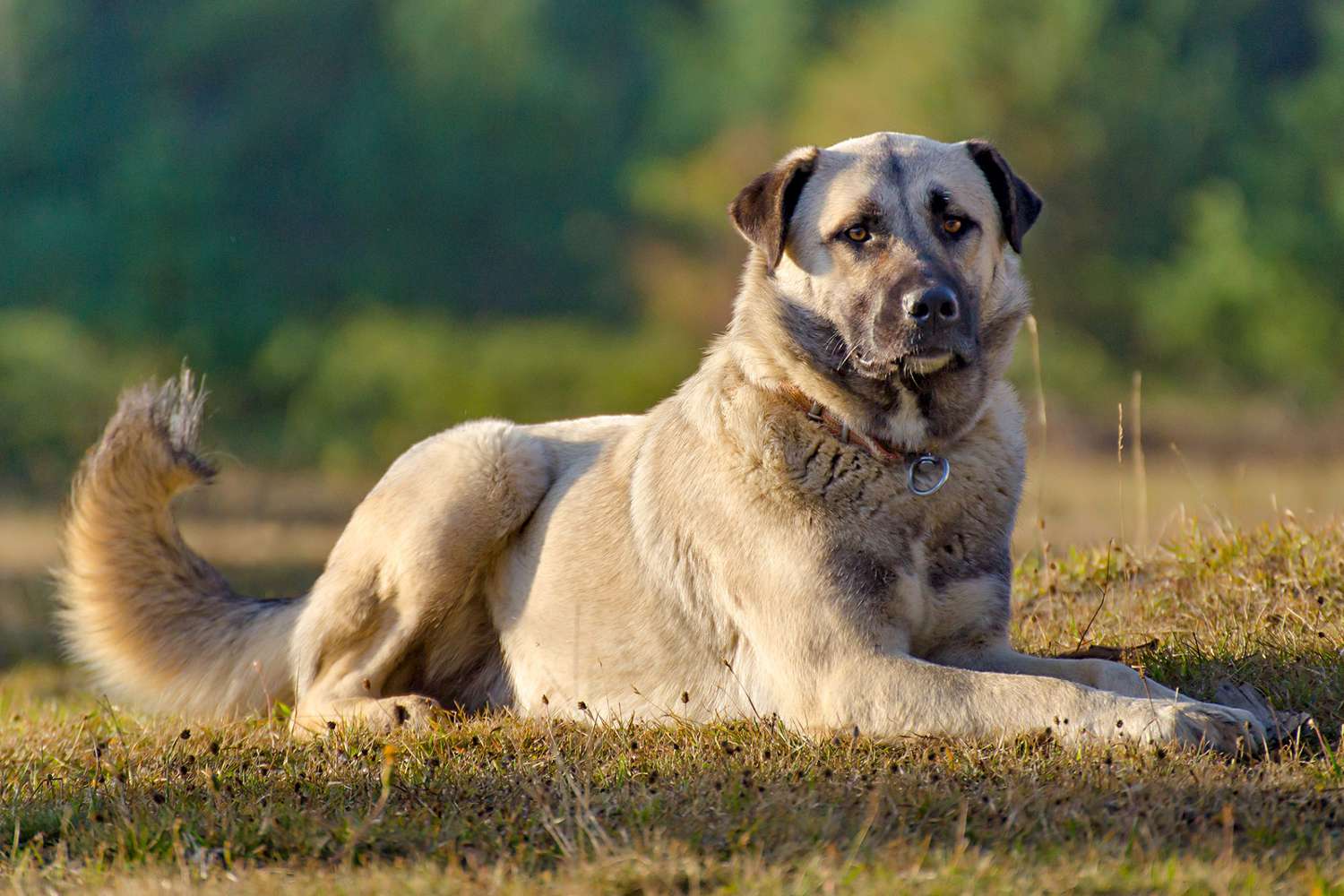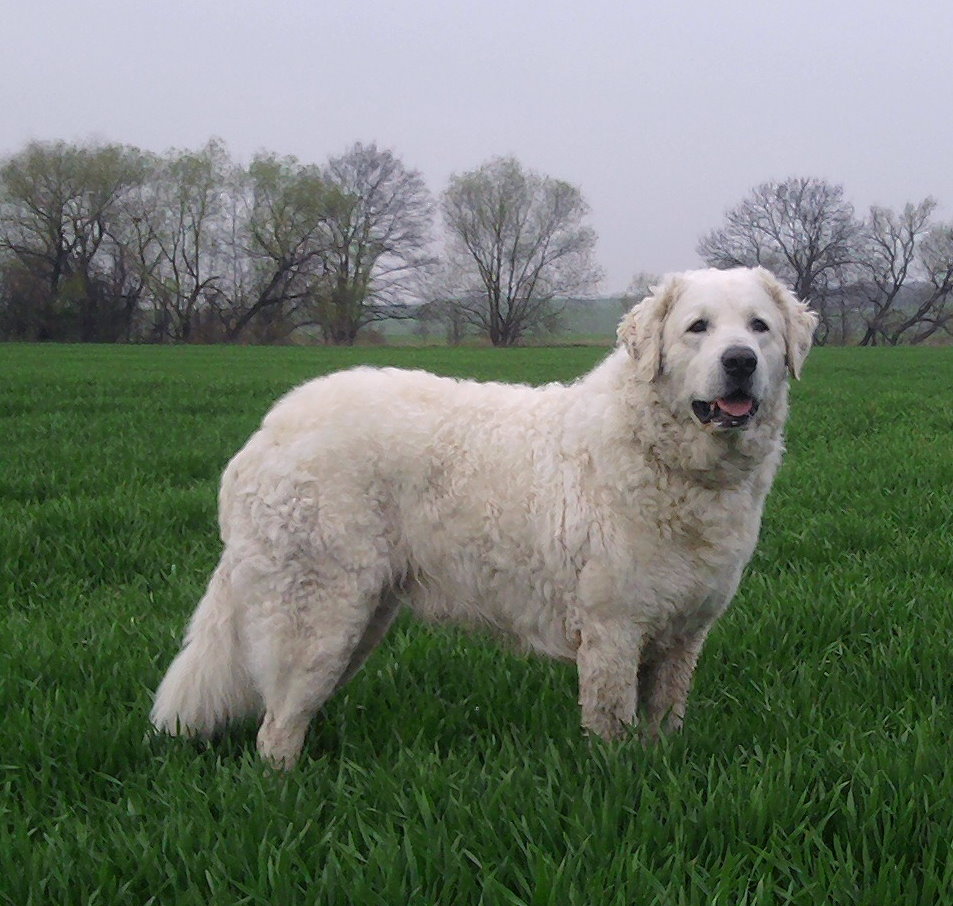The first time I saw a Black Russian Terrier in person, I literally stopped mid-conversation. There’s something commanding about these dogs that demands your attention—not in an aggressive way, but with a quiet dignity that’s impossible to ignore. With their imposing build, jet-black coat, and intense yet calm gaze, these dogs have a presence that fills a room without making a sound.
Despite their intimidating appearance, Black Russian Terriers (or “BRTs” as fans of the breed call them) have a gentle soul wrapped in that massive, powerful body. Originally bred to be the ultimate working dog for the Soviet military, today’s Black Russian Terriers have traded army bases for family homes—though that protective, loyal spirit still runs strong in their DNA.
If you’ve been considering adding one of these remarkable dogs to your family, or you’ve just discovered the breed and want to learn more, this comprehensive guide is for you. We’ll dive deep into their fascinating history (spoiler alert: it involves the Soviet military during the Cold War!), their striking physical characteristics, unique personality traits, training needs, health considerations, and what it really takes to live with one of these majestic guardians day to day.
Whether you’re a potential owner or just a dog enthusiast curious about this relatively rare breed, strap in for everything you need to know about the magnificent Black Russian Terrier!
The Fascinating History: From Soviet Military Project to Loyal Family Guardian
Despite their name, Black Russian Terriers aren’t actually terriers at all! Their story begins in the aftermath of World War II, when the Soviet Union set out to create the perfect working dog for their military and police forces. In the late 1940s and early 1950s, the state-owned Red Star Kennel near Moscow began one of the most ambitious dog breeding programs in history.
The Soviet Super-Dog Project
The Soviet military wanted a dog that could withstand the harsh Russian climate, work under extreme conditions, guard installations and prisoners, and be large and intimidating yet controllable. Rather than using existing breeds, they decided to create their own “designer dog” from scratch.
Under the direction of Colonel G. Medvedev, breeders combined approximately 17 different breeds to create the Black Russian Terrier. The primary foundation breeds included the Giant Schnauzer (which contributed most heavily to the appearance), Rottweiler, Airedale Terrier, and Newfoundland. They also incorporated genes from Great Danes, Moscow Water Dogs, and several other working breeds.
The breeding program focused entirely on working ability rather than appearance. These early BRTs were selected for intelligence, trainability, protective instincts, courage, and physical stamina. The harsh Russian climate naturally eliminated dogs that couldn’t handle extreme temperatures, creating a tough, resilient breed.
From Military Asset to Family Companion
The Black Russian Terrier remained exclusively a military dog until 1957, when some puppies were first sold to civilian breeders. These civilian breeders began to refine the appearance of the breed while maintaining its working abilities, creating the more standardized look we recognize today.
In 1981, the breed received official recognition in its homeland, and the Fédération Cynologique Internationale (FCI) accepted the breed standard in 1984. The American Kennel Club didn’t officially recognize the Black Russian Terrier until 2004, making it a relatively new addition to the recognized breed lineup in the United States.
Today, while still somewhat rare outside Eastern Europe, the Black Russian Terrier has developed a devoted following worldwide for its combination of imposing appearance, protective nature, and surprising gentleness with family. They’ve successfully transitioned from military working dogs to beloved family companions, though they’ve never lost their guardian instincts and working dog mentality.
Distinctive Physical Features: The BRT Look
If you’ve ever had the pleasure of seeing a Black Russian Terrier in person, you know they have a way of commanding attention without even trying. There’s something about their powerful yet elegant build, distinctive coat, and confident demeanor that makes heads turn wherever they go.
Size and Structure: Power and Agility Combined
Black Russian Terriers are large, substantial dogs with a rectangular body shape that exudes strength without appearing bulky. Males typically stand 27-30 inches at the shoulder and weigh between 100-150 pounds. Females are slightly smaller at 26-29 inches and 80-120 pounds.
Despite their size, these dogs move with surprising agility and grace. Their gait is free-flowing and ground-covering, showing the athletic ability that made them such versatile working dogs. Strong, muscular shoulders and powerful hindquarters provide the drive and power needed for sudden bursts of speed or sustained activity.
The BRT’s body features a deep chest, level back, and strong, well-boned limbs that support their substantial frame. Their bear-like feet are large and round, with tough pads designed for work on various terrains. Everything about their structure communicates strength, stability, and working capability.
That Distinctive Black Coat
The Black Russian Terrier’s coat is one of its most defining features—a thick, double-layered protection system that helped these dogs survive the harsh Russian winters. The outer coat is coarse and slightly wavy to curly, while the undercoat is soft and dense for insulation.
True to their name, BRTs are predominantly black, though some may have scattered gray hairs throughout their coat. The breed standard allows for a small white patch on the chest, but otherwise, these dogs should be solid black. Their coat grows to medium-long length, about 2-4 inches across the body, with longer furnishings on the legs, face, and tail.
One of the breed’s most distinctive features is the facial furnishings—a beard and eyebrows that give the BRT a wise, somewhat stern expression. These longer hairs around the face served a practical purpose for working dogs, providing additional protection for the face in cold weather.
Head and Expression: Intelligence and Vigilance
A Black Russian Terrier’s head is large and proportional to the body, with a moderate stop and strong muzzle. Their skull is brick-shaped when viewed from the front, conveying both power and intelligence.
The eyes of a BRT are medium-sized, oval, and dark in color. Their expression is alert and confident, showing the keen intelligence and watchfulness that made them excellent guard dogs. Their ears are medium-sized, triangular, and hang forward against the head, adding to their attentive appearance.
When all these elements come together—the powerful build, the distinctive black coat with facial furnishings, and that intelligent, watchful expression—the result is a dog of remarkable beauty and presence. Even in a crowd of other large breeds, a Black Russian Terrier stands out, commanding respect with their dignified bearing and confident demeanor.
Temperament and Personality: What to Expect From Your BRT
Living with a Black Russian Terrier is like having a wise, slightly stern best friend who takes their job as your protector very seriously. These dogs have complex personalities that combine working dog focus with family dog affection, and understanding their unique temperament is essential before bringing one into your life.
Loyal Guardians with Calm Confidence
If I had to describe the BRT temperament in one phrase, it would be “confidently protective.” These dogs form deep bonds with their families and consider protection their life’s mission. They’re naturally aloof with strangers—not aggressive, but reserved and watchful, taking their time to evaluate new people before accepting them.
This protective nature comes directly from their breeding as military and police dogs. A well-bred Black Russian Terrier has what breed enthusiasts call “emotional stability”—the ability to assess threats calmly without panicking or showing unnecessary aggression. They’re vigilant without being reactive, which makes them excellent watchdogs who won’t constantly sound false alarms.
When it comes to actually protecting their family, BRTs are courageous and determined. They have a natural instinct to place themselves between their loved ones and any perceived danger. With proper training, they learn to channel these protective instincts appropriately, responding to genuine threats while remaining composed in everyday situations.
At Home: The Family BRT
Despite their working dog heritage and imposing appearance, Black Russian Terriers are surprisingly affectionate with their families. Many BRT owners describe their dogs as “velcro dogs” who want to be wherever their people are—whether that’s helping in the garden, lounging on the couch, or just following you from room to room.
These dogs form particularly strong bonds with their primary person but are typically loving with all family members. While not overly demonstrative like some breeds, they show their affection through constant companionship, gentle leaning against you, or placing themselves where they can keep watch over you.
Black Russian Terriers are known for being calm and composed indoors, with a good “off switch” that allows them to relax when nothing needs their attention. However, they’re always somewhat alert, ready to spring into action if needed. This combination of relaxed alertness makes them excellent household companions who aren’t constantly demanding activity but remain ready to engage when appropriate.
With Children and Other Pets
Well-bred and properly socialized Black Russian Terriers typically do very well with children in their family. They’re naturally gentle despite their size and often take on a protective role toward “their” kids. Many BRT owners report that their dogs seem to instinctively understand they need to be careful around children and will modify their behavior accordingly.
That said, due to their large size, interactions between BRTs and very young children should always be supervised. A wagging tail or accidental bump from a 100+ pound dog can easily knock over a small child, even when the dog is being friendly.
When it comes to other pets, early socialization is key. BRTs raised with cats or other dogs often coexist peacefully with their housemates. However, some Black Russian Terriers may be selective about which dogs they get along with, particularly those of the same sex. Their prey drive is generally moderate—not as high as in hunting breeds, but still present, especially for small running animals.
Intelligence and Trainability: Smart but Independent
Black Russian Terriers are highly intelligent dogs with excellent problem-solving abilities. This intelligence, combined with their working dog background, makes them highly trainable when the right methods are used.
However, BRTs aren’t blindly obedient. These dogs were bred to think independently in their guard work, and they maintain that thoughtful approach to commands. They’ll often seem to consider what you’re asking before deciding whether to comply. This isn’t stubbornness in the typical sense—it’s the breed’s natural tendency to evaluate situations before acting.
The key to training a Black Russian Terrier is using positive, reward-based methods that respect their intelligence and dignity. Harsh or punitive training methods don’t work well with this sensitive breed and can damage the trust between dog and handler. Consistent, firm (but not harsh) leadership combined with clear expectations brings out the best in these smart dogs.
Special Considerations: The Working Dog Mentality
Never forget that beneath the dignified exterior, the Black Russian Terrier is still very much a working breed. This means they come with some special considerations that potential owners should be aware of:
First, they need a job. Whether it’s formal work like advanced obedience, protection sports, or therapy work, or informal tasks like “patrolling” your property, BRTs thrive when they have a purpose. Without meaningful work, they can become bored and potentially destructive.
Second, they mature slowly. Despite their size, Black Russian Terriers don’t reach full mental maturity until around 3 years of age. This means you’ll have a very large “puppy” on your hands for quite some time, requiring consistent training and patience throughout the extended adolescent period.
Finally, they require socialization throughout life. While naturally reserved with strangers, BRTs need positive exposure to different people, animals, and situations to ensure their protective nature doesn’t develop into inappropriate suspicion or reactivity.
Living with a Black Russian Terrier means embracing their complex personality—confident yet sensitive, protective yet gentle, serious yet affectionate. They’re not the right breed for everyone, but for those who appreciate their unique combination of traits, they can be extraordinary companions.
Training and Exercise: Bringing Out the Best in Your BRT
Training a Black Russian Terrier is a fascinating journey that challenges both your patience and creativity. These intelligent, independent dogs aren’t automatically compliant, but with the right approach, they can become exceptionally well-mannered and responsive companions. Similarly, their exercise needs require thoughtful planning to keep them physically fit and mentally satisfied.
Training Philosophy: Respect and Consistency
The foundation of successful BRT training is mutual respect. These dogs respond poorly to harsh methods or attempts to dominate them. Instead, they thrive with clear, consistent leadership that respects their intelligence while providing firm boundaries.
Positive reinforcement methods work exceptionally well with Black Russian Terriers. Using rewards like treats, praise, and play to mark desired behaviors builds motivation and strengthens your bond. That said, being “positive” doesn’t mean being permissive—BRTs need and respect structure and clear expectations.
Start training early, ideally from the day your BRT puppy comes home. Begin with basic commands like sit, stay, come, and loose-leash walking, then progress to more advanced skills as your dog matures. Keep training sessions relatively short (10-15 minutes) but frequent, as BRTs can lose interest in repetitive drills.
Socialization: Creating a Confident Guardian
Socialization is absolutely crucial for Black Russian Terriers and should begin in puppyhood and continue throughout their lives. Without proper socialization, their natural reserve with strangers can develop into excessive suspicion or even fear-based aggression.
Expose your BRT puppy to a wide variety of people, animals, environments, and situations, always ensuring the experiences are positive. Pay particular attention to helping them become comfortable with the types of people they might naturally be wary of—men with deep voices, people wearing hats or uniforms, people using canes or wheelchairs, etc.
As your BRT matures, continue with regular social opportunities that help them practice appropriate behavior around strangers and other dogs. Remember that socialization isn’t about forcing interactions, but about teaching your dog to remain calm and confident in various situations.
Exercise Needs: Physical and Mental Stimulation
Despite their large size, Black Russian Terriers have moderate exercise requirements compared to some working breeds. Most BRTs need about 30-60 minutes of physical activity daily, which can include walks, jogging, swimming, or play sessions in a securely fenced yard.
The quality of exercise matters more than quantity for this breed. BRTs aren’t typically high-energy dogs who need hours of running, but they do need meaningful activity that engages both body and mind. A 30-minute training session that combines physical movement with mental challenges can be more satisfying for them than an hour of mindless fetch.
Mental exercise is just as important as physical exertion for this intelligent breed. Puzzle toys, training games, scent work, and new experiences all help keep their minds active and prevent boredom. A bored BRT is more likely to develop problem behaviors like excessive barking, digging, or destructive chewing.
Advanced Training Options
Once your Black Russian Terrier has mastered basic obedience, consider exploring more advanced training that taps into their natural abilities and gives them meaningful work to do. Options that often appeal to BRTs include:
- Advanced Obedience: Many BRTs excel in formal obedience competitions
- Rally: A more relaxed form of obedience that involves following a course
- Protection Sports: Sports like Schutzhund or PSA that channel protective instincts in controlled ways
- Tracking: Using their scenting abilities to follow trails
- Therapy Work: Well-socialized BRTs can make impressive therapy dogs
- Nosework: Scent detection games that challenge their problem-solving abilities
Even if you’re not interested in formal competition, incorporating elements of these activities into your everyday training can provide excellent mental stimulation and build your bond with your dog.
Common Training Challenges
Several challenges are common when training Black Russian Terriers:
Independence: BRTs may question why they should perform certain tasks or choose to ignore commands they deem unnecessary. Consistent, reward-based training that shows them the benefit of compliance helps overcome this challenge.
Slow maturation: These dogs remain mentally puppyish until about 3 years of age, requiring patience during their extended adolescence. Maintain consistent expectations even when they test boundaries during this period.
Protective behaviors: Without proper training, a BRT’s natural protectiveness can become inappropriate guardian behavior. Teach a solid “leave it” command and work with a professional trainer if your dog shows concerning protective reactions.
Remember that training a Black Russian Terrier is a lifelong process, not something you complete in puppy class and consider finished. These intelligent dogs thrive with ongoing mental challenges and training throughout their lives, and the strong training relationship you build will enhance your bond and create a well-adjusted, reliably behaved companion.
Grooming and Care: Maintaining Your Black Beauty
The Black Russian Terrier’s striking appearance requires dedicated maintenance to keep them looking and feeling their best. Their distinctive coat, while beautiful, demands regular attention, and their overall care routine requires commitment from their owners.
Coat Care: Managing That Magnificent Fur
Let’s be real—the BRT’s coat is high-maintenance. Their double coat with its coarse, slightly wavy outer layer and soft, dense undercoat requires regular grooming to prevent mats and tangles that can become painful and difficult to remove.
At minimum, plan to brush your Black Russian Terrier thoroughly 2-3 times per week using a slicker brush and metal comb to remove loose hair and prevent mats. Pay special attention to areas prone to tangling—behind the ears, under the “armpits,” around the collar area, and between the legs.
While BRTs don’t shed excessively compared to some breeds, they do blow their undercoat seasonally, typically twice a year. During these shedding periods, daily brushing becomes necessary to remove the dead undercoat and prevent it from matting.
The facial furnishings (beard and eyebrows) need special attention. The beard will collect food, water, and outdoor debris, requiring daily wiping and regular combing to prevent matting. Some owners keep water bowls available that minimize facial soaking, but expect some cleanup after drinking and eating regardless.
Trimming and Styling
Black Russian Terriers require regular trimming to maintain their characteristic appearance. Most BRT owners have their dogs professionally groomed every 6-8 weeks, though some learn to do this themselves with practice.
The traditional BRT cut maintains the beard, eyebrows, and leg furnishings while keeping the body coat at a manageable length (usually around 1-2 inches). Show dogs are groomed to emphasize their rectangular build and powerful appearance, but pet BRTs can be kept in a shorter, more practical cut if preferred.
Never shave a Black Russian Terrier down completely. Their double coat provides important protection from both cold and heat, and shaving can permanently damage the coat texture and remove their natural insulation.
Basic Hygiene and Care
Beyond coat care, basic hygiene maintenance includes:
- Nail trimming every 3-4 weeks
- Ear cleaning as needed (usually weekly) to prevent infections
- Teeth brushing several times weekly to prevent dental disease
- Regular checks of paw pads for cracks or irritation
Bathing should be done as needed, typically every 6-8 weeks for most BRTs. More frequent bathing can strip the natural oils from their coat, leading to dry skin and coat issues. Use a high-quality dog shampoo formulated for double-coated breeds.
Health Considerations
Black Russian Terriers are generally healthy dogs with a lifespan of 10-12 years, but like all breeds, they have some hereditary health concerns that potential owners should be aware of:
Hip and elbow dysplasia: These developmental joint conditions are common in many large breeds. Responsible breeders screen breeding stock with X-rays to reduce the incidence.
Progressive retinal atrophy: An eye condition that can lead to blindness. Genetic testing can identify carriers.
Hyperuricosuria: A condition affecting uric acid metabolism that can lead to bladder stones. Genetic testing is available.
Bloat: Like many large, deep-chested breeds, BRTs can be susceptible to gastric dilatation-volvulus (GDV), a life-threatening emergency where the stomach fills with gas and twists.
Working with a reputable breeder who conducts appropriate health testing is the best way to minimize these risks. For BRTs from unknown backgrounds, regular veterinary care becomes even more important for early detection of potential issues.
Nutrition and Feeding
Proper nutrition is fundamental to your BRT’s health and wellbeing. These large dogs thrive on high-quality food appropriate for their size, age, and activity level. Whether you choose commercial food or home-prepared meals (developed with veterinary guidance), ensure it provides complete nutrition without excessive calories.
Black Russian Terriers are generally “easy keepers” despite their size, often requiring less food than you might expect for dogs of their weight. Obesity is a significant health risk for large breeds, placing extra stress on joints and organs, so monitoring body condition is important.
To reduce the risk of bloat, consider feeding two smaller meals daily rather than one large one, and avoid vigorous exercise immediately before and after mealtimes.
Setting Up Your Home
Before bringing home a Black Russian Terrier, prepare your living space with these considerations in mind:
- Secure fencing: A sturdy fence at least 6 feet tall is essential for safely containing these large, capable dogs
- Durable bedding: Invest in a high-quality dog bed appropriate for large breeds
- Grooming station: Create a dedicated area for regular brushing sessions
- Storage solutions: Keep grooming tools, food, and supplies organized and accessible
- Cleanup supplies: Stock up on cleaning products for beard drips and occasional muddy paws
With proper care and maintenance, your Black Russian Terrier will not only look magnificent but will enjoy optimal health and comfort throughout their life. The investment of time in regular grooming and care routines pays dividends in both your dog’s wellbeing and the special bond that develops during these hands-on care sessions.
Is a Black Russian Terrier Right for You?
After diving deep into the world of the Black Russian Terrier, you may be wondering if this magnificent breed is truly the right match for your lifestyle and family. These powerful guardians offer unwavering loyalty, impressive intelligence, and striking beauty—but they also come with significant responsibilities and specific needs.
The Ideal BRT Owner
Black Russian Terriers thrive with owners who:
- Have some previous dog experience (not ideal for first-time dog owners)
- Can provide firm, consistent leadership without harsh methods
- Have time for regular grooming and maintenance
- Want a dog that forms deep bonds with family
- Appreciate a protective, somewhat reserved dog (rather than a social butterfly)
- Can provide meaningful activities and “work” for an intelligent working breed
- Have secure housing with adequate space and strong fencing
- Are willing to invest in proper training and socialization
BRTs are probably not the right choice for people who:
- Want a low-maintenance dog that requires minimal grooming
- Prefer a dog that loves everyone immediately
- Travel frequently without their dog
- Cannot provide adequate secure space and exercise
- Are unwilling or unable to commit to ongoing training
- Have very young children without supervision capabilities
Financial Considerations
Owning a Black Russian Terrier represents a significant financial commitment. Initial costs include the purchase price ($1,500-$3,500 from reputable breeders), setup supplies, and initial veterinary care.
Ongoing expenses include:
- Quality food appropriate for large breeds
- Regular veterinary care and preventative medications
- Professional grooming (if you don’t do it yourself)
- Training classes and possibly behavioral consultation
- Potential emergency veterinary care (which can be substantial for large breeds)
The lifetime cost of owning a BRT can easily exceed $15,000-$20,000, making financial readiness an important factor in the decision to bring one home.
Finding Your Black Russian Terrier
If you decide a Black Russian Terrier is the right breed for you, take time to find a responsible source:
Reputable breeders: Look for breeders who conduct appropriate health testing, raise puppies in a home environment, provide early socialization, and are knowledgeable about the breed. Expect to be thoroughly interviewed yourself—good breeders care deeply about where their puppies go.
Rescue organizations: While relatively rare in shelters, BRTs and BRT mixes do sometimes need rehoming. Breed-specific rescues can be excellent resources, as the dogs often come with some known history and temperament assessment.
Regardless of source, meet the dog in person if possible before committing, and ask lots of questions about health, temperament, and care requirements.
The BRT Lifestyle
Living with a Black Russian Terrier means embracing certain lifestyle adjustments:
Grooming will become a regular part of your routine, requiring dedicated time several times weekly.
Your social life will include consideration of your dog’s needs—these are not dogs that can be left alone for extended periods or easily handed off to pet sitters.
Home maintenance might include more frequent cleaning, especially of floors and furniture, due to beard drips and muddy paws.
Travel requires planning for either dog-friendly accommodations or trusted care in your absence.
Exercise and training become integrated into your daily schedule rather than optional activities.
Final Thoughts
Black Russian Terriers are extraordinary dogs for the right owners. Their combination of protective instincts, intelligence, and devoted companionship makes them incomparable partners for those willing to meet their needs. The bond that develops with these dogs is deep and meaningful, as they truly become integrated members of your family.
If you have the time, resources, and commitment to provide what a BRT needs, you’ll be rewarded with one of the most loyal, capable, and impressive canine companions available. These noble guardians don’t give their hearts easily, but once they do, their devotion is absolute.
Whether you ultimately choose to welcome a Black Russian Terrier into your home or decide another breed better suits your lifestyle, I hope this exploration of these magnificent dogs has given you insight into what makes them so special to those who love them. After all, finding the right match between dog and owner is the foundation of a lifetime of happiness for both!
